Both the Michelin X Ice Snow and the Bridgestone Blizzak tires have different variants, where although you can not go wrong choosing any for winter performance, there are still some key differences to look out for. Let’s check them out!
The Bridgestone Blizzak has 2 variants, the Blizzak WS90 and its predecessor, WS80. Both are 3PMSF rated, and out of them the WS90 does things better overall in terms of grip and handling.
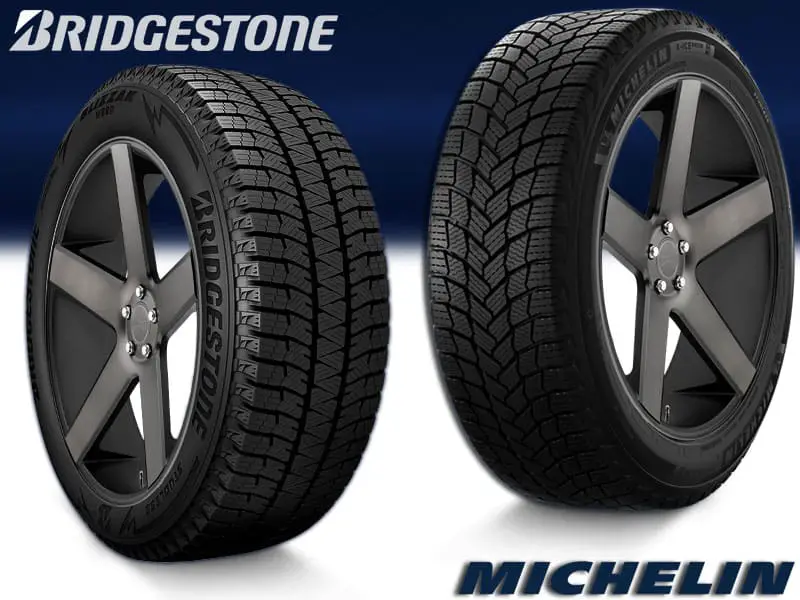
The Michelin X Ice also has 2 variants, where the Michelin X Ice Snow has better traction values, showing superior snow grabbing capabilities and lateral traction compared to Michelin Ice XI3 (which is more oriented towards hard packed snow).
So we would be covering better, or should I say more competitive players here. Let’s start things off with their tread pattern.
Table of Contents
Tire Sizes
The Michelin X Ice Snow comes in 15 to 20 inches with total of 125 sizes, where all of them have load range of either SL or XL, and speed ratings of either H or T.
All sizes have tread depth of 10.5/32″ and weight range of 16 to 40 lbs.
Moreover, all sizes have 3 peak mountain snowflake ratings of course, along with M+S and they all come with 40k miles warranty.
On the other side, the Bridgestone Blizzak WS90 comes in (lower) 52 sizes in 15 to 19 inches wheels.
Though they have similar speed ratings (of H and T), and load ratings of XL and SL.
All sizes have greater tread depth of 11 and 12/32″, (mostly sizes are seen with 12/32″). And their weight range goes form 17 lbs to 30 lbs.
Moreover, all these sizes don’t offer any mileage warranty, unlike the Michelin X Ice Snow.
Bridgestone Blizzak Ws90
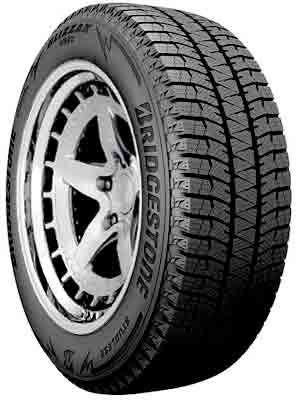
Michelin X Ice Snow
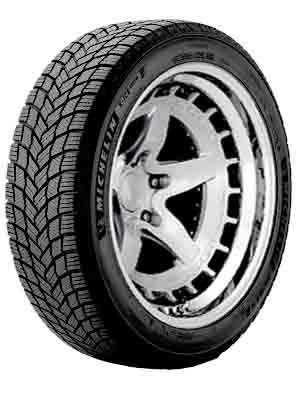
Tread Differences
The Blizzak WS90 characterizes a directional tread pattern having a distinct continual, crisscross rib in the mid (highlighted with blue) with two broad grooves on its sides, multi-directional zigzag sipes, and disjointed grooves that are created due to traction slits along the shoulder lugs.
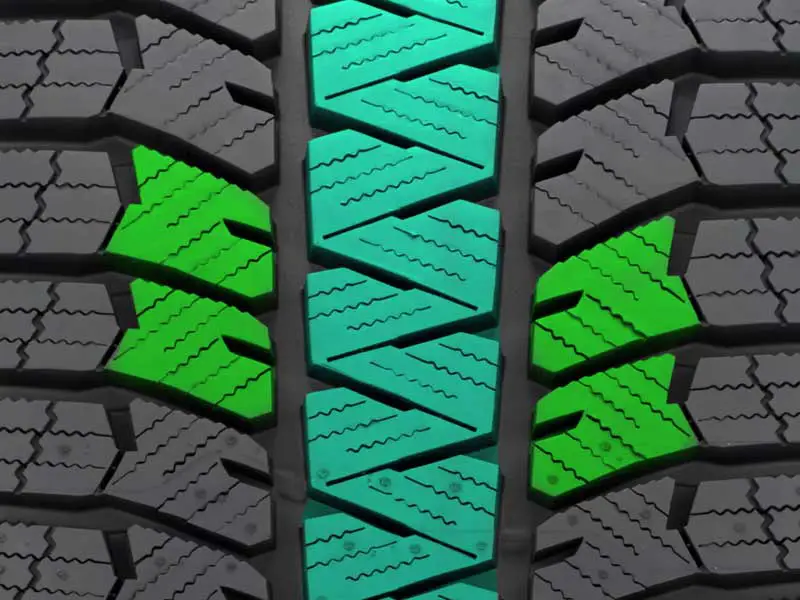
The continuous rib increases the rubber to road contact and is surrounded by blocks with deep notches and offset sides (having similar siping pattern but at an angle here).
Deeper channels and full-depth sipes remove water and provide good aquaplaning resistivity over the wet and icy road as well.
A relatively smaller void ratio reduces its snow traction in comparison as a lower number of grooves account for less snow evacuation capacity.
On the other side, the Michelin X Ice Snow tire also has a directional tread design with 5 circumferential grooves, 2 types of sipes, an angled arrangement of square-shaped blocks, and relatively smaller shoulders.

The void ratio is higher in comparison, leading to a lesser contact patch which eventually reduces the on-road grip of the tread.
Grooves along with a unique siping pattern which includes rectilinear wide sipes and multi-directional zigzag sipes, provide reliable ability to wipe away water and resist hydroplaning over wet and icy tracks, however, lesser depth of voids makes it less efficient than the competitor in this respect.
Larger void ratio provides effective evacuation of soft snow through the tread and accounts for its better snow traction as compared to its competitor.
Braking and Handling Performance
Both tires are although pretty great, the Blizzak WS90 takes the lead when it comes to dry and wet roads, whereas the Michelin has the upper hand on snowy tracks. Let’s talk about all of these one by one.
Dry Traction
The Bridgestone Blizzak WS90 gives you superior grip on dry roads due to its larger footprint availability.

So naturally it gives out shorter braking distances in comparison. In our tests, it impressively manages a braking distance of just 88 feet when decelerating from 50 mph on a dry course.
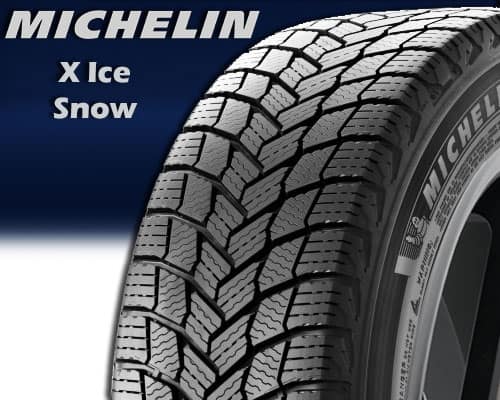
Conversely, the Michelin X Ice Snow with wider grooves takes longer to stop, giving out 92 feet of braking distance. The tire basically doesn’t form a continuous running rib in the middle like the Blizzak, so its connection with the road isn’t as consistent, hence its dry road grip gets compromised.
Wet and Snow Traction
The Bridgestone Blizzak WS90 with its deeper grooves and full-depth, twisted sipes effectively disperse water, providing superior traction over wet and icy surfaces.
In our tests, the tire gives out with minimal wet decelerating distance of 128 feet when stopping from 50 to 0 mph. And on ice, it manages to come to a halt within 31 feet from a speed of 12 mph.
Comparing it with Michelin X Ice Snow, you get to see it lacking behind with braking distance of 136 feet on wet roads, while on ice, it gave out 32 feet.
So what’s causing the tire’s lacking performance?
Well, the tire has good enough biters and interconnected grooves which assist hydroplaning resistance, it does not come with aggressive enough sipes. If you consider the tread pattern of both tires, you’d see that the Blizzak ws90 has sipes with greater interlocking wave-like pattern.
This particular siping structure maintains their flexibility under strenuous conditions, such as harsh braking, acceleration, and cornering. Thus, it delivers a reliable grip on icy surfaces, and in wet environments, these sipes effectively absorb water particles, by creating a suction.
However, when it comes to snowy pavements, it lacks a little to its counterpart, giving out 4 feet longer braking distance in comparison.
That’s because the Michelin X Ice Snow provides better snow holding capabilities, and forming snow to snow contact.
Snow basically sticks better on other snow particles, instead of rubber, and so with greater snow grabbing abilities, you get greater traction on Michelin X Ice.
Though both tires are M+S and three-peak mountain snowflake rated.
FYI: Following video is highly recommended.
Handling Comparison
The Blizzak WS90 performs better with respect to steer handling over the dry road as its shoulder blocks are relatively larger and traction marks over them form a disjointed groove, accounting for firm traction while taking turns.
Discontinuous longitudinal grooves along with deep lateral channels and in-depth sipes provide enough space for the removal of water, resulting in stable traction as the automobile moves around the corner on a wet/icy road.
When it comes to dry handling on-road, Michelin loses from the competitor as its square-shaped shoulder lugs are comparatively smaller and offer limited traction over turns.
Full-depth sipes and lateral grooves among shoulder lugs scrub off water, offer dependable traction while cornering over wet or icy paths. However, a lower depth of grooves makes its performance lesser than the contestant.
Also Read:
https://comparethetire.com/do-you-need-chains-on-all-4-tires/
https://comparethetire.com/tread-design/
Hydroplaning Resistivity comparison
Both of these tires are competent for resisting hydroplaning due to the distinct design of voids and sipes.
However, the Blizzak WS90 takes the lead due to increased depth of its grooves, for tested sizes, its tread is 1.5/32’’ deeper than its competitor, (on average).
Water is quickly wiped off by its wider grooves and multi-directional zigzag sipes, resulting in better aquaplaning resistance.
The crisscross structure of the internal rib further enhances its water wiping ability.
On the other side, the Michelin X ICE presents dependable slip resistivity because its grooves, wide linear sipes, and zigzag sipes are proficient in wiping the water away from the road.
Nevertheless, it stands behind in the competition as its relatively narrow grooves have decreased space available to hold water due to their lesser depth in comparison.
Rolling Resistance Comparison
Blizzak come across more friction while rolling than its opponent as the contact patch is higher due to narrow grooves.
Its tread have a large surface area in direct contact with the pavement, utilizing more energy to roll over, hence, additional fuel is expended.
ICE SNOW has a compact contact patch due to the higher void ratio which eventually leads to a lower rolling resistance in comparison.
As the surface area of tread touching the road is quite limited, less hysteresis (energy loss) is caused while rolling and its fuel efficiency is also superior to its contestant.
Drive Comfort and Noise
WS90 presents more noise on road due to the enhanced depth and straight-line structure of central grooves.
Although its void ratio is comparatively low yet its grooves are deeper and linear, offering vast room for collision, resonation and reflection of wind particles, leading to loud sound while rolling along.
However, an enhanced contact patch and enhanced biting ability of tread lead to better traction and standard comfort while driving on road.
Although the Michelin X Ice Snow has higher void ratio than its competitor, its lugs are arranged in a V-form design, and grooves among them are formed in such an orientation, so that sound waves passing through them automatically cancel each other and less noise is produced as a result.
However, a massive void ratio and less contact patch tend to minimize its road traction, hence, it offers comparatively less comfort on hard paved paths.
Durability and Tread Life
The Bridgestone Blizzak WS90 has a twin compound structure which is utilized for its tread composition; the first 55% contains NanoPro Tech multicell complex with hydrophilic properties and enhanced traction capacity over snow while the rest of 45% features Bridgestone’s winter standard compound.
Still, its tread wears down quickly as it faces high rolling friction due to the increased contact patch of the tread.
On the other hand, the Michelin has used its innovative EverGrip technology for the composition of Michelin X Ice Snow, which employs rubber inclusions and Flex-Ice 2.0 compound for enhanced tread life and traction over snow and ice.
Owing to this sturdy tread composition and low rolling resistance due to the larger void ratio it wears down slowly and keep on many seasons.
40,000 miles of manufacturer’s tread wear warranty proves its extraordinary durability among other winter specialized tires.
Wrapping it Up
In the intricate world of tire selection, it all boils down to the specific conditions and driving needs. Both of our snow tires here get to have their own unique tread designs and features.
The Bridgestone Blizzak WS90, with its continuous, crisscross ribs and deeper grooves, excels on dry, wet, and icy surfaces. That’s because its offers shorter braking, and reliable cornering, relatively. Though it falls slightly behind when it comes to (on-road) snow traction due to its lower void ratio.
In contrast, the Michelin X Ice Snow, with slightly wider tread voids get to hold snow in a better way, resulting in superior traction efficacy. It offer 4 feet shorter braking distances there.
Furthermore, regarding fuel usage, the Michelin X Ice Snow takes the lead, while Blizzak WS90 comes out with superior noise reduction capabilities.
In terms of durability and tread life, each tire uses innovative technologies to enhance traction and wear resistance. Blizzak uses a twin compound structure, while its counterpart employs its innovative EverGrip technology.
Though overall, out tests show that the Michelin X Ice Snow is slightly more durable,


